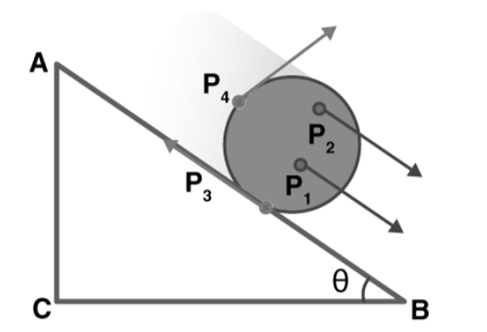The position or orientation of a body changes throughout time, which is referred to as motion. The motion of animals and people, for example, is a continual state of movement in this cosmos. Aside from that, the fundamental particle of matter, the atom, is also in a state of continual motion. This means that every physical procedure in the universe has some kind of motion, which might be slow or fast, but is always there.
Motion
Motion is defined as a change in a person’s position with regard to time. By identifying the change in positional coordinates and then associating it through the eye of an arbitrary observer, any object in motion can be perceived with the naked eye. Motion can be expressed in terms of both position vectors, such as displacement and distance, as well as speed factors, such as velocity, acceleration, speed and time.
We call a body at rest when it does not change its position with regards to time. However, when a body’s position varies over time, we refer to it as being in motion. Translational, rotational, periodic and non-periodic motions are all examples of motion.
Translation motion
Translational motion is defined as the movement of all points of a moving body along the same line or direction. There is no change in an object’s orientation relative to a fixed point when it is undergoing translational motion. For instance, a train on its tracks, a man walking along the street, birds flying across the sky and so on.
A body is considered to be experiencing translational motion when it is shifted or moved from one location to another. It is the motion of a moving body in which all of its points move in the same path or direction. There is no change in an object’s direction relative to a fixed point when it is undergoing translational motion.
In this sort of motion, all locations of the body have the same magnitude and direction of velocities and accelerations at all times. The trajectories of all the points are the same. This means that when trajectories are stacked one on top of the other, they will coincide. In essence, the body’s orientation is fixed in relation to a single axis.
Examples of Translation motion:
- Consider a rectangular block put on the right-angled triangle’s slanting edge. If the block is considered to slide along this edge with no side movement, every point in the rectangular block will experience the same displacement, and the distance between the points will be maintained. Every location in the body experiences the same velocity in pure translational motion, regardless of time. Both points, P1 and P2, go through the same motions.

2.Translational motion is illustrated by a car travelling in a straight line, a bullet exiting a pistol and so on.
Rotational motion
Rotational motion is the motion of a rigid body in which all of its particles move in circles around an axis with the same angular velocity; it is also the rotation of a particle around a fixed point in space.
Consider a circular block running down the right-angled triangle’s edge. We can learn something new by looking at the placement and orientation of different spots on the cylindrical block. The cylindrical body’s points have a very different sensation than the rectangular block.

Each point in the graphic showing velocity experiences a different magnitude of velocity in a different direction, as indicated by the arrows. The points are organised in this diagram with regard to a rotating axis. When you limit a body and fix it along a straight line, you get rotation. This indicates that the body can only rotate around the line, which is what rotational motion is called. Rotational motion can be seen in a ceiling fan, a potter’s wheel or a vehicle’s wheel.
Conclusion
Motion can be defined as a change in an object’s location with regard to time. Motion can be seen in a book that is dropping off a table, water flowing from a faucet, rattling windows and so forth. Even the air we breathe is in motion. The universe as a whole is in motion. We live in a cosmos that changes every time. The atom, which is the fundamental particle of matter, is also in constant motion. Every physical process in the cosmos involves motion in some form. Motion might be fast or slow, but motion is always present.
 Profile
Profile Settings
Settings Refer your friends
Refer your friends Sign out
Sign out






